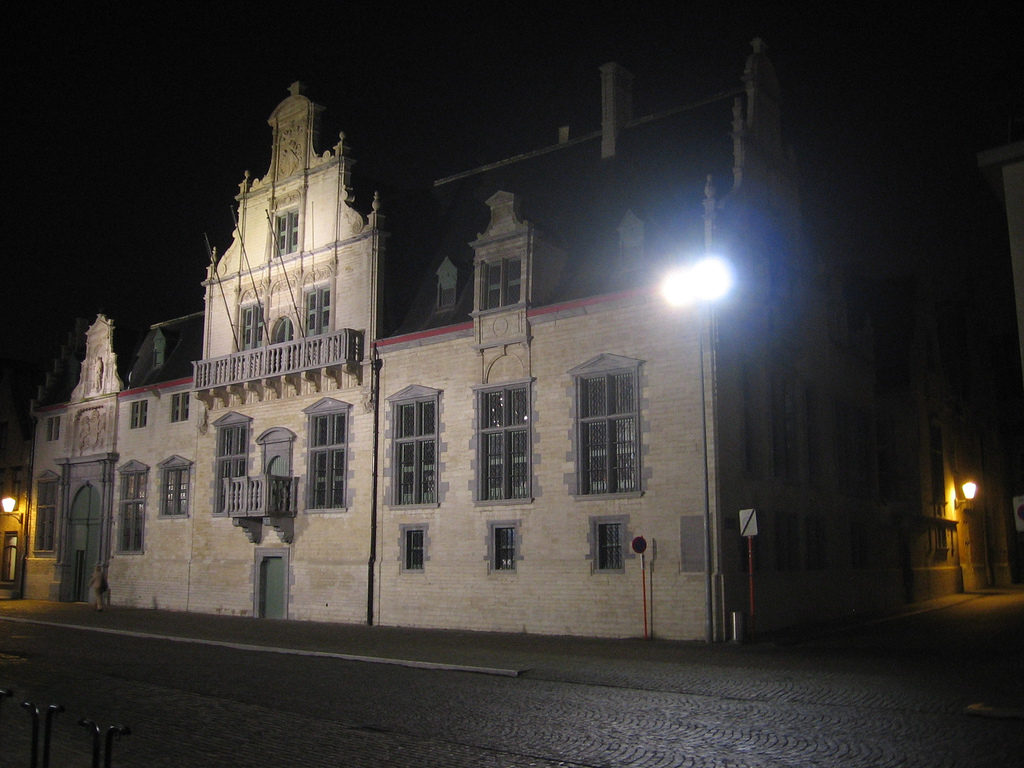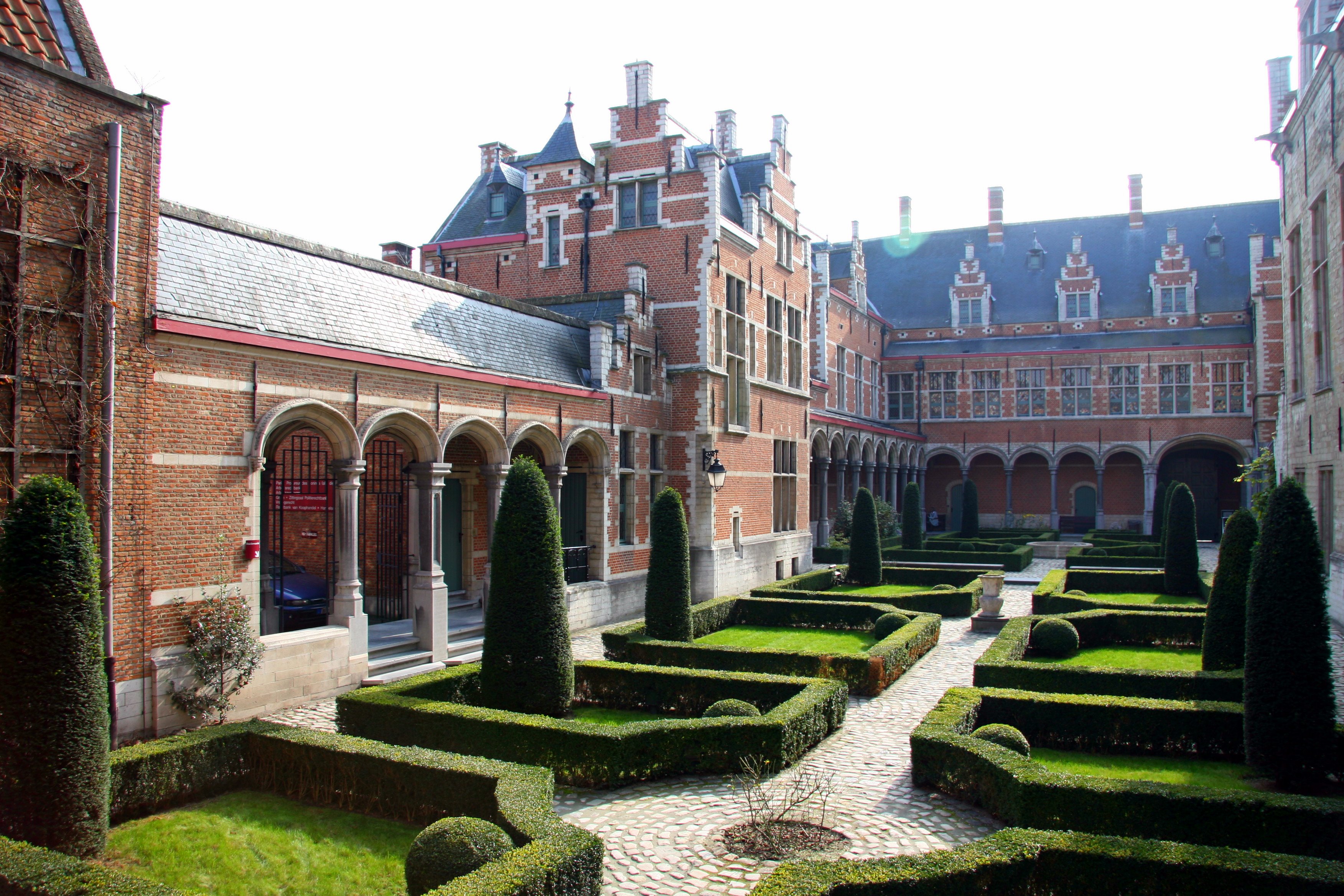Hof van Savoye on:
[Wikipedia]
[Google]
[Amazon]

 The Hof van Savoye (Court of
The Hof van Savoye (Court of

Savoy
Savoy (; ) is a cultural-historical region in the Western Alps. Situated on the cultural boundary between Occitania and Piedmont, the area extends from Lake Geneva in the north to the Dauphiné in the south and west and to the Aosta Vall ...
) or Palace of Margaret of Austria is an early 16th-century building in Mechelen
Mechelen (; ; historically known as ''Mechlin'' in EnglishMechelen has been known in English as ''Mechlin'', from where the adjective ''Mechlinian'' is derived. This name may still be used, especially in a traditional or historical context. T ...
, Belgium
Belgium, officially the Kingdom of Belgium, is a country in Northwestern Europe. Situated in a coastal lowland region known as the Low Countries, it is bordered by the Netherlands to the north, Germany to the east, Luxembourg to the southeas ...
. It was one of the first Renaissance
The Renaissance ( , ) is a Periodization, period of history and a European cultural movement covering the 15th and 16th centuries. It marked the transition from the Middle Ages to modernity and was characterized by an effort to revive and sur ...
buildings in Northern Europe.
Margaret of Austria, Duchess of Savoy
Margaret of Austria (; ; ; ; 10 January 1480 – 1 December 1530) was Governor of the Habsburg Netherlands from 1507 to 1515 and again from 1519 until her death in 1530. She was the first of many female regents in the Netherlands. She was vario ...
, Governor of the Netherlands
, Terminology of the Low Countries, informally Holland, is a country in Northwestern Europe, with Caribbean Netherlands, overseas territories in the Caribbean. It is the largest of the four constituent countries of the Kingdom of the Nether ...
, was granted a house located in the ''Korte Maagdenstraat'' (Virgins Short Street),It is not uncommon for Dutch language street names to distinct a shorter from a longer stretch. Less usual, the short ''Korte Maagdenstraat'' held its name when the corresponding name for a longer street was abandoned. but she found it too small and started an ambitious expansion campaign in 1507. From 1517 to 1530 the architect Rombout II Keldermans furthered the project, along the ''Keizerstraat'' (Emperor Street) modifying what became the rear wing, which faces the Palace of Margaret of York
Margaret of York (3 May 1446 – 23 November 1503), also known as Margaret of Burgundy, was Duchess of Burgundy from 1468 to 1477 as the third wife of Charles the Bold, and after his death (1477) acted as a protector of the Burgundian State. ...
, her step grandmother who had died in 1503. Margaret raised her nephew Charles, the later Holy Roman Emperor, in her palace, at which she lived until her death in 1530.
Historian Eric Ives
Eric William Ives (12 July 1931 – 25 September 2012) was a British historian who was an expert on the Tudor period, and a university administrator. He was Emeritus Professor of English History at the University of Birmingham.
Early life
...
describes the inner courtyard and southern wing of the palace, still much like Anne Boleyn
Anne Boleyn (; 1501 or 1507 – 19 May 1536) was List of English royal consorts, Queen of England from 1533 to 1536, as the Wives of Henry VIII, second wife of King Henry VIII. The circumstances of her marriage and execution, by beheading ...
must have seen it during the stage of her upbringing at Margaret's court. It stood a model for the Palace of Whitehall
The Palace of Whitehall – also spelled White Hall – at Westminster was the main residence of the English monarchs from 1530 until 1698, when most of its structures, with the notable exception of Inigo Jones's Banqueting House of 1622, ...
as rebuilt for Anne in the 1530s.Ives holds Anne's uncertain birth year at about 1501, in which case Anne had nearly Charles' age and young teenagers lived at the Hof van Savoye. If she was born approximately 6 years later, around 1507, she would have stayed at the Palace of (the late) Margaret of York across the street that already referred to an emperor long before Charles came to that title.
In 1546 the explosion of the city gate that held the gunpowder stock, the ''Zandpoort'' (Sand Gate), brought repairable damage to the palace. It was owned by the city until 1561. That year, it received a new calling as the residence of Granvelle, the first Archbishop of Mechelen, and right-hand man of Philip II.
In 1609 the building was bought back by the city and served as the headquarters of the Great Council of the Netherlands from 1616 until 1795.
The ''Hof van Savoye'' became known as the ''Gerechtshof'' (Court of Justice), because it houses the lower courts (Criminal and Civil Court, Justice of the Peace, and Police Court).
See also
* List of castles in BelgiumNotes
Footnotes
References
:* :* Houses completed in 1530 Buildings and structures in Mechelen Renaissance architecture in Belgium {{Belgium-struct-stub